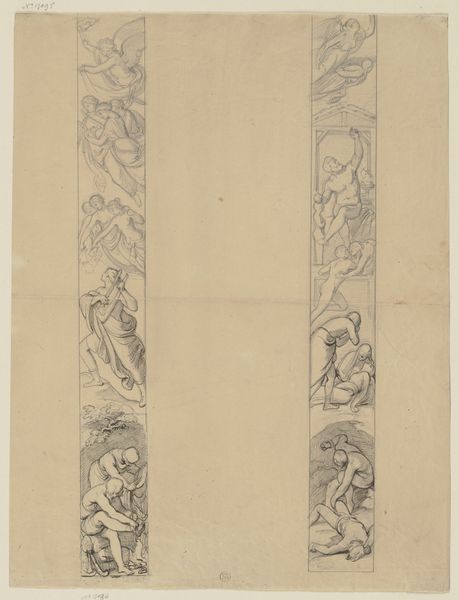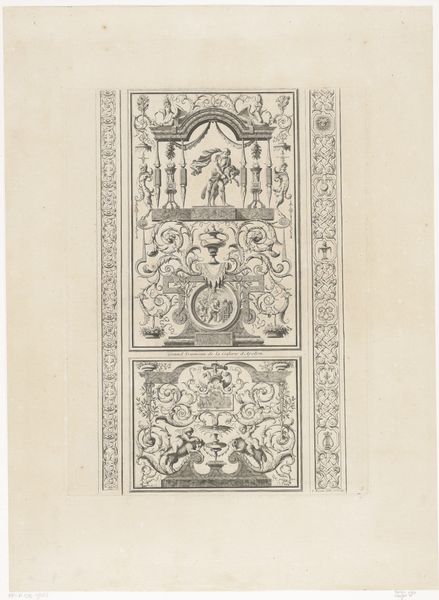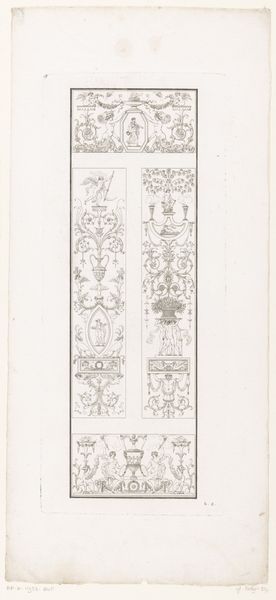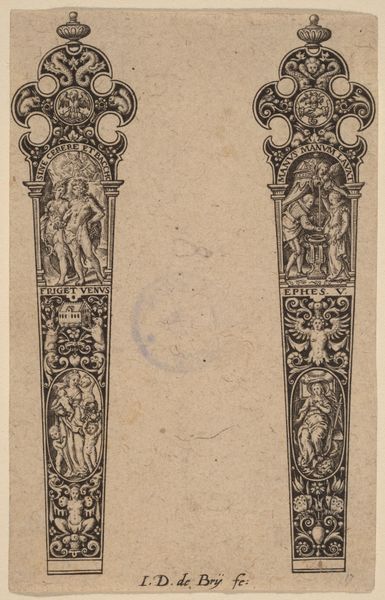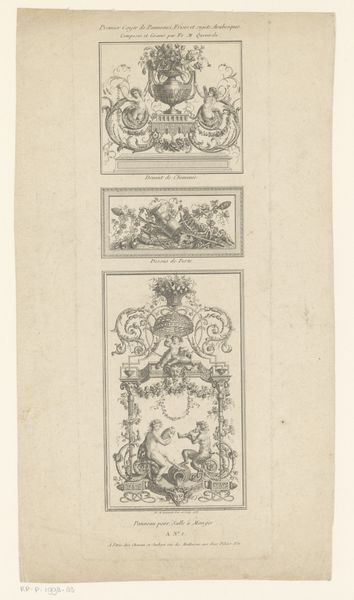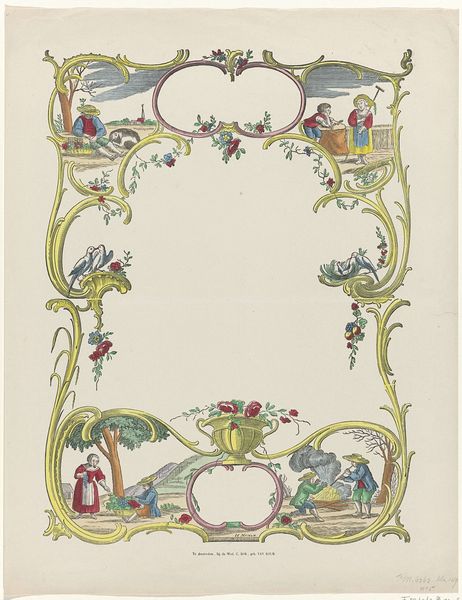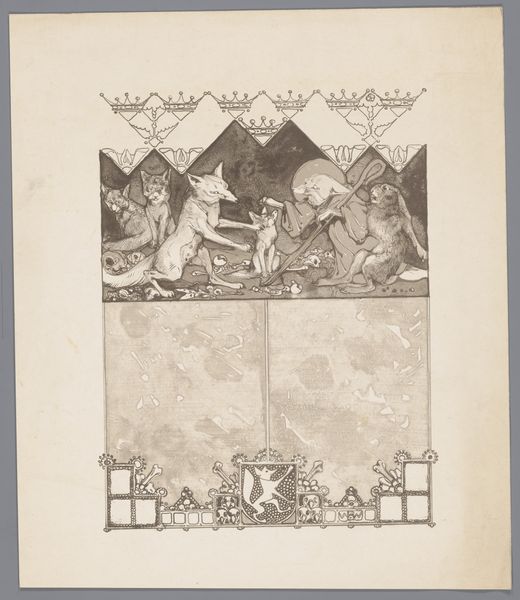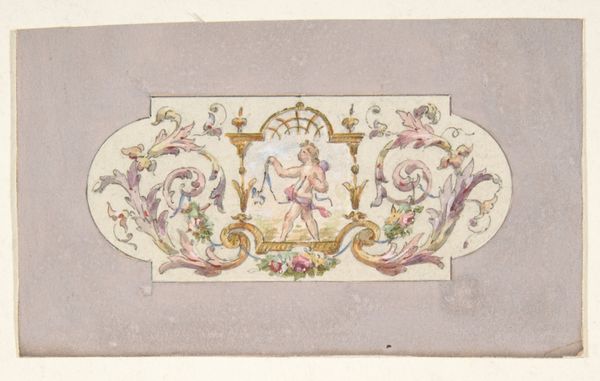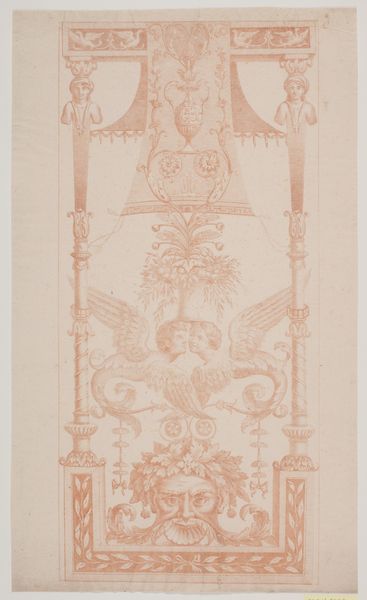
Design for Ceiling at Fontainebleau 1850 - 1900
0:00
0:00
Dimensions: 12 9/16 x 3 1/4 in. (31.9 x 8.3 cm)
Copyright: Public Domain
Editor: This is "Design for Ceiling at Fontainebleau," a drawing dating from 1850 to 1900 by Jules-Edmond-Charles Lachaise, housed at the Metropolitan Museum of Art. It's watercolor and print, quite detailed and the muted palette gives it an airy feel. What is your read of this artwork, particularly its compositional structure? Curator: Observe how Lachaise orchestrates the design using symmetry and linear precision. The central axis, defined by the ribbon-wrapped tree, is bookended by geometrically rigid shapes at the top and bottom: a circular monogram and an elaborate vase. The subdued color scheme serves to emphasize the interplay between these forms and the balance in the overall composition. Editor: It's definitely striking how those geometric shapes create such a strong vertical emphasis. Could you elaborate on the significance of the line as a formal element here? Curator: Indeed. The 'line' operates on multiple levels. Consider not only its function in outlining shapes, creating form, and conveying perspective, but also in how it delineates one form from another, in relation to the space that surrounds it. The line is itself the decorative and determining component of the design’s semiotic logic. How do you see that decorative aspect functioning here? Editor: That’s an interesting idea. I see how each element’s outline is important, but how the repetition of thin lines creates depth in a space, yet also flattens it out with this color and tone treatment. How fascinating that a design for a ceiling can evoke so many different perceptions through color and tone alone. Curator: Precisely. The deceptive simplicity of line reveals the sophisticated articulation of form that characterizes neoclassicism itself, especially in architectural and decorative designs such as this one. It showcases how carefully rendered form can evoke profound perceptions.
Comments
No comments
Be the first to comment and join the conversation on the ultimate creative platform.
